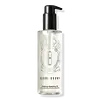What's inside
What's inside
 Key Ingredients
Key Ingredients

No key ingredients
 Benefits
Benefits

 Concerns
Concerns

 Ingredients Side-by-side
Ingredients Side-by-side

Isopropyl Palmitate
EmollientPentaerythrityl Tetraethylhexanoate
EmollientPolybutene
PEG-20 Glyceryl Triisostearate
EmollientIsohexadecane
EmollientPEG-8 Diisostearate
EmulsifyingAleurites Moluccanus Seed Oil
Skin ConditioningPEG-12 Diisostearate
EmulsifyingTocopherol
AntioxidantLimnanthes Alba Seed Oil
Skin ConditioningOlea Europaea Fruit Oil
MaskingHelianthus Annuus Seed Oil
EmollientMethyldihydrojasmonate
MaskingSimmondsia Chinensis Seed Oil
EmollientJasminum Officinale Flower Wax
EmollientCalophyllum Inophyllum Seed Oil
AntimicrobialCamellia Japonica Seed Oil
EmollientLavandula Hybrida Oil
EmollientLavandula Angustifolia Oil
MaskingBisabolol
MaskingGlycerin
HumectantGlyceryl Laurate
EmollientWater
Skin ConditioningPentylene Glycol
Skin ConditioningDipentaerythrityl Tri-Polyhydroxystearate
EmollientLinalyl Acetate
MaskingTocopheryl Acetate
AntioxidantIsopropyl Palmitate, Pentaerythrityl Tetraethylhexanoate, Polybutene, PEG-20 Glyceryl Triisostearate, Isohexadecane, PEG-8 Diisostearate, Aleurites Moluccanus Seed Oil, PEG-12 Diisostearate, Tocopherol, Limnanthes Alba Seed Oil, Olea Europaea Fruit Oil, Helianthus Annuus Seed Oil, Methyldihydrojasmonate, Simmondsia Chinensis Seed Oil, Jasminum Officinale Flower Wax, Calophyllum Inophyllum Seed Oil, Camellia Japonica Seed Oil, Lavandula Hybrida Oil, Lavandula Angustifolia Oil, Bisabolol, Glycerin, Glyceryl Laurate, Water, Pentylene Glycol, Dipentaerythrityl Tri-Polyhydroxystearate, Linalyl Acetate, Tocopheryl Acetate
Ingredients Explained
These ingredients are found in both products.
Ingredients higher up in an ingredient list are typically present in a larger amount.
Helianthus Annuus Seed Oil is the oil derived from the seeds of a Sunflower. Sunflower seed oil is non-fragrant. It is an emollient, meaning it helps to soften the skin.
Sunflower seed oil contains many fatty acids. The fatty acids found in sunflower seeds include (from highest amount to least): linoleic acid, myristic acid, palmitic acid, stearic acid, arachidic acid, oleic acid, and linolenic acid.
These fatty acids help the skin create ceramides. Ceramides play a role in repairing the skin barrier.
Helianthus Annuus Seed Oil helps moisturize the skin. This in turn helps the skin look more rejuvenated and smoother.
Sunflowers are rich in vitamin E.
Historians believe Indigenous cultures of North America domesticated sunflowers before corn. Thus they relied on sunflower oil for a variety of uses. One such use is moisturizing skin and hair.
Sunflower seed oil may not be fungal acne safe. We recommend speaking with a professional if you have any concerns.
Learn more about Helianthus Annuus Seed OilLavandula Angustifolia Oil is more commonly known as lavender essential oil. It is considered a fragrancing ingredient.
Lavender imparts a famous scent. While the smell is lovely, this ingredient and may sensitize skin in topical products. This is because about 85% of the oil is made up of linalool and linalyl acetate.
When exposed to air, these two compounds become strong allergens. This ingredient exhibits cytotoxicity at low concentrations; amounts of 0.25% have been shown to damage skin cells.
A study from Japan found this ingredient caused lavender sensitivity after widespread exposure.
Lavender essential oil has some antimicrobial, antibacterial, and anti-inflammatory properties. However, the cons of this ingredient may outweight the pros.
More research is needed to confirm lavender essential oil's effects when used in aromatherapy.
Lavandula Angustifolia is known as the English Lavender and famous for creating purple fields in Provence, France.
Learn more about Lavandula Angustifolia OilPeg-20 Glyceryl Triisostearate comes from Isostearic Acid and glycerin.
It is an emollient, emulsifier, and gentle cleanser. As an emollient, it helps trap moisture to keep skin soft and hydrated. Emulsifiers help prevent ingredients from separating.
This ingredient is common in oil-based products. This is because it helps oil-ingredients be easily washed away without leaving a residue.
Peg-20 Glyceryl Triisostearate may not be fungal-acne safe.
Learn more about PEG-20 Glyceryl Triisostearate